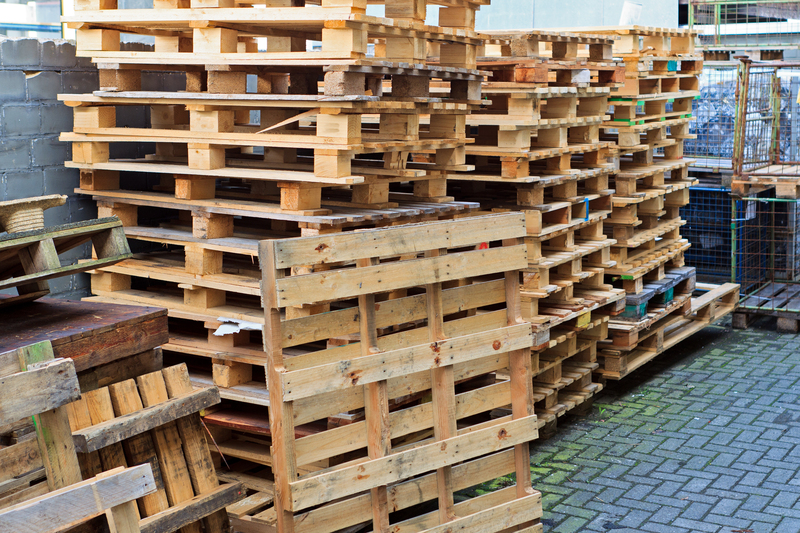Sustainable Solutions for Disposing and Recycling Pots and Pans
Our kitchens are filled with various types of cookware, including pots, pans, and skillets. But what happens when these trusty companions reach the end of their usable life? Like many household items, cookware disposal can present an environmental challenge. Fortunately, sustainable solutions for disposing and recycling pots and pans are available--helping protect the planet while cleaning up your kitchen.

Why Proper Disposal of Pots and Pans Matters
Many people are unaware that simply throwing pots and pans in the trash can harm the environment. Cookware is often made from metals, plastics, and coatings that, if sent to landfill, will persist for decades or longer. Some cookware may also release toxins as they degrade, contributing to pollution and harming local ecosystems.
- Metal waste: Aluminum, stainless steel, copper, and cast iron cookware occupy landfill space and miss out on valuable recycling opportunities.
- Non-stick coatings: Pans with Teflon or PTFE coatings can contain chemicals that pose challenges for waste management.
- Throwaway culture: Disposing rather than repurposing goods contributes to increased waste and resource extraction.
By focusing on eco-friendly solutions for old cookware, we lessen these negative impacts and foster a culture of sustainability at home.
What Types of Pots and Pans Can Be Recycled?
Not all cookware is created equal when it comes to recycling. Here's a look at the most common materials and their potential for sustainable recycling:
- Stainless Steel: This popular cookware material is highly recyclable. Many metal recycling facilities accept stainless steel pans, often after removing non-metal parts like handles or lids.
- Aluminum: Aluminum pots and pans are valuable to recyclers, especially if they contain no plastic or wooden elements.
- Copper: Copper cookware is prized for its high scrap value and is accepted by most scrap metal recyclers.
- Cast Iron: Cast iron pans have a long life, but if damaged beyond repair, they can be recycled at metal facilities.
- Non-Stick (Teflon/PTFE): These pans are more challenging. While the underlying metal can be recycled, non-stick coatings usually must be stripped first, which not all recyclers are equipped for.
- Ceramic and Enamel-Coated: Unfortunately, most curbside recycling programs do not accept these. Specialized facilities may recycle the metal core if separated from the coating.
When considering sustainable cookware disposal, it is vital to check with your local facilities for specific guidelines and requirements.
Eco-Friendly Options for Old Cookware
There are numerous sustainable ways to get rid of unwanted pots and pans that won't fill up a landfill. Below are the most effective options for responsible cookware disposal and recycling:
1. Donate Usable Cookware
- Charity and Thrift Stores: Many organizations accept gently used cookware if it is clean and in good working condition. Shelters, food banks, and second-hand stores can benefit from pans you no longer need.
- Community Programs: Schools, churches, and community kitchens often need extra cookware for programs and events.
- Online Marketplaces: List functioning cookware on platforms like Craigslist, Facebook Marketplace, or Freecycle. Rehoming extends their life cycle and helps others.
Tip: Give your cookware a good scrub before donating and ensure it is free from chips, cracks, or broken handles for maximum usability.
2. Recycle Cookware Materials
- Metal Recycling Centers: Most metal pots and pans, even rusty or damaged, are accepted at scrap metal yards. Remember to remove non-metal parts like plastic handles or glass lids.
- Household Hazardous Waste Collection: Some areas hold periodic events where you can safely dispose of non-stick or coated cookware that is otherwise not recyclable through normal channels.
- Retailer Take-Back Programs: Certain cookware brands and stores offer recycling programs or trade-in events. Always check their latest policies online.
3. Creative Reuse: Upcycling Cookware
- Planters and Garden Beds: Old pots and pans make quirky plant containers. Drill a hole for drainage and fill with soil to grow herbs or flowers.
- Decor and Art Projects: Turn pans into wall clocks, storage bins, or even candle holders. Pinterest is a treasure trove of inspiration!
- Organizers: Repurpose shallow pans as desk organizers, tool trays, or catch-alls for small spaces.
Upcycling not only reduces waste but can also inspire creativity and a sense of accomplishment.
4. Manufacturer Recycling Initiatives
- Special Programs: Leading cookware brands such as Calphalon, GreenPan, and Zwilling sometimes offer take-back or recycling of their own products, especially during sustainability campaigns.
- Mail-Back Services: Some brands provide prepaid shipping labels so you can send back old cookware for recycling or responsible disposal.
Always check the brand's website for the latest on cookware recycling and trade-in offers.
Tips for Responsible Cookware Disposal
Successfully recycling your old frying pans and pots requires preparation. Here's how to make the process as smooth and eco-friendly as possible:
- Remove Non-Metal Parts: Take apart the cookware by detaching handles, lids, knobs, and inserts made from plastic, wood, or glass.
- Check for Coatings: For non-stick pots and pans, speak to the recycler to confirm they'll accept PTFE-coated items. Some may request removal or may not accept them at all.
- Clean First: Wipe or wash your cookware before recycling to keep materials free from food contamination.
- Sort Properly: Sort your cookware by material, such as aluminum, steel, or copper, for smoother recycling processing.
- Research Local Guidelines: Contact your local sanitation department or search online for municipal recycling policies regarding cookware.
Common Questions on Sustainable Cookware Disposal
Can I put pots and pans in curbside recycling?
No, most curbside programs do NOT accept cookware. Metal recycling facilities or household hazardous waste sites are the right place for these items. Contact your local recycling authority for specific directions.
What should I do with non-stick pans?
Non-stick pans require special attention. If the pan's core is metal (often aluminum), some scrap yards may accept it if the coating is removed. Otherwise, consider hazardous waste collection events or brand take-back programs.
Are old pots and pans safe to donate?
Only donate cookware in safe, functional condition. Avoid giving away chipped, deeply scratched, warped, or heavily stained pans--these can be hazardous or unhealthy for new users.
How do new eco-friendly cookware materials impact disposal?
Eco-friendly cookware like ceramic, carbon steel, and uncoated cast iron can often be recycled more easily than heavily coated or composite materials. They are also typically free from PFAS and other persistent chemicals, making their eventual disposal less risky for the environment.
Benefits of Recycling and Repurposing Cookware
- Conserves Natural Resources: Recycling metals from old pots and pans saves energy and raw materials compared to producing new metals from ore.
- Reduces Landfill Waste: Diverting cookware from landfill decreases pollution and waste management costs.
- Supports a Circular Economy: Donating and upcycling extend the life of materials, reducing demand for new products and fostering sustainability.
- Protects the Environment: Proper disposal limits chemical leaching and pollution from coatings or rusting metal.
Sustainable Buying: Choosing Eco-Friendly Cookware
One way to minimize future disposal woes is to buy consciously from the start. Here are tips for making your kitchen greener with sustainable cookware choices:
- Choose Durable Materials: Invest in cookware like cast iron, stainless steel, or copper, which can last a lifetime if well-maintained.
- Avoid Toxic Coatings: Steer clear of pans coated with PFOA, PFAS, or harsh chemicals that may complicate disposal.
- Look for Recyclable Components: Select pots and pans with detachable handles or parts that can be easily recycled or replaced.
- Buy from Responsible Brands: Support companies known for their recycling programs, eco-friendly production, or use of recycled materials.

Case Studies: Communities Supporting Sustainable Cookware Disposal
Certain cities and organizations are leading the way in sustainable cookware management.
- New York City: Local scrap yards have partnered with the municipal recycling program to allow cookware drop-off at special events.
- San Francisco: The city runs public "fix-it clinics" where residents can repair or upcycle old household items, including pots and pans.
- National Retail Programs: Large chains like Best Buy and Sur La Table occasionally offer cookware recycling or trade-in events, helping divert thousands of pounds of metal from landfills.
Conclusion: Make a Difference with Sustainable Cookware Disposal
Whether you're cleaning out the kitchen or upgrading to newer models, disposing of old pots and pans doesn't have to harm the environment. Sustainable solutions for disposing and recycling pots and pans include donating, recycling through proper facilities, upcycling around your home, and supporting brands with green initiatives. By taking a little extra time to dispose of each piece responsibly, you contribute to a healthier planet and a cleaner, less wasteful society.
Take the next step today:
- Assess your old cookware and sort it by material.
- Research local recycling and donation options.
- Try your hand at a creative upcycling project!
- Choose sustainable, long-lasting cookware for the future.
Together, we can cook up a future with less waste, reduced pollution, and a thriving circular economy. Start your journey towards sustainable solutions for disposing and recycling pots and pans--your kitchen, community, and the Earth will thank you.
